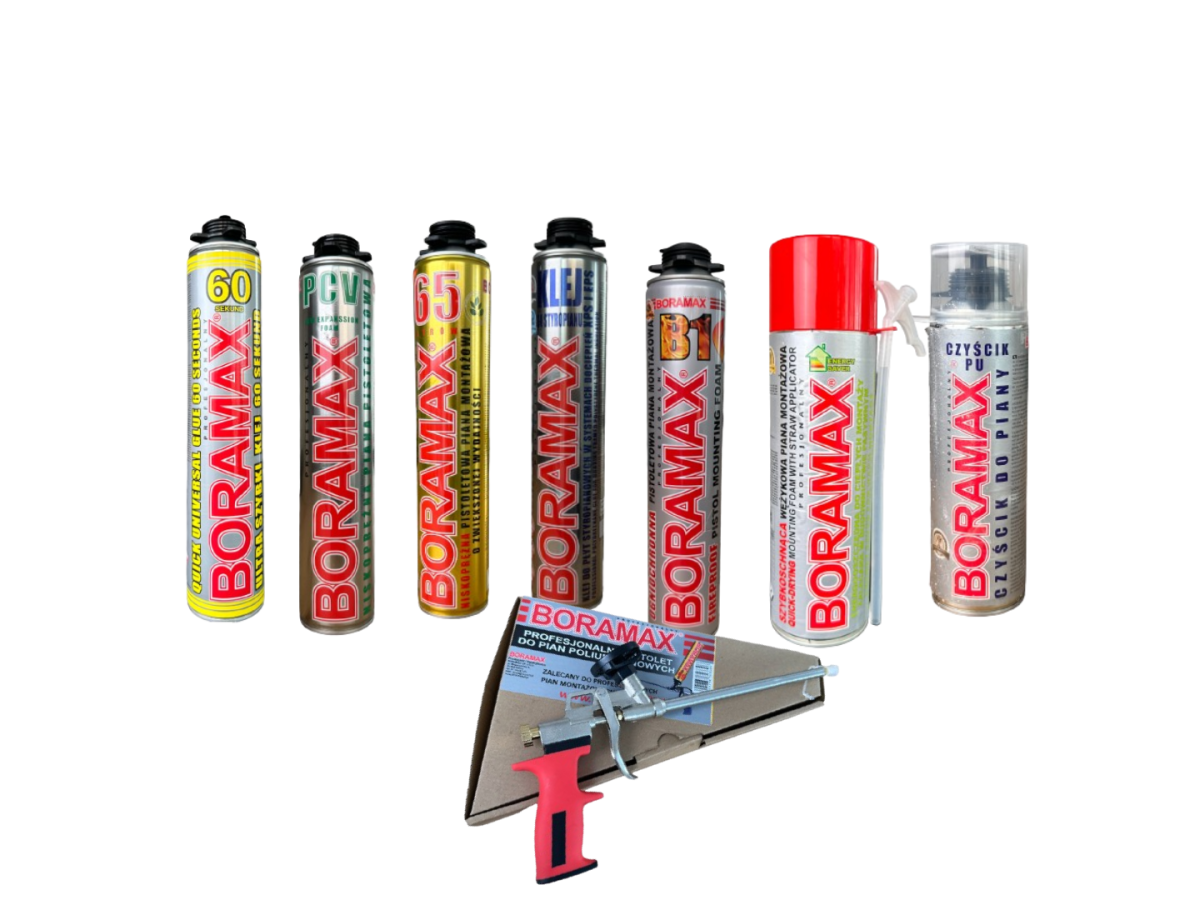Polyurethane foam is a versatile building material used for sealing, insulating and installing windows, doors and other building elements. It is of great importance in modern construction due to its unique properties. Let's take a closer look at the types of polyurethane foam and its features.
Polyurethane foam is classified according to various criteria:
By the method of application:
- Foam in cans with an applicator;
- Foam for the installation gun.
In terms of expansion:
- Low-expansionary;
- Medium-expansive;
- Highly expansive.
For seasonal use:
- Summer foam;
- Winter foam.
By composition:
- One-component;
- Two-component.
Key characteristics of the foam
The main characteristics of polyurethane foam determine its effectiveness and application:
- Drying time. This is one of the key parameters that determines how long it takes for the foam to polymerise and turn from liquid to solid. Drying time can vary depending on the type of foam and environmental conditions. For example, humidity and air temperature can speed up or slow down the process.
- Adhesion. The adhesion of the foam to various surfaces is fundamental for effective filling of cracks and crevices. High adhesion provides a strong bond to concrete, wood, metal, plastic and many other materials. This ensures long-lasting sealing and insulation.
- Thermal insulation properties. Polyurethane foam plays an important role in providing thermal insulation in buildings. It reduces heat loss through cracks and crevices, which is important for the energy efficiency of buildings.
- Sound insulation properties. The foam also helps to reduce the penetration of sound waves through building structures, which provides better acoustic insulation of rooms.
- Resistance to moisture. A good foam should be resistant to moisture to prevent water and moisture from entering the cracks and crevices where it is used.
- UV resistance. UV resistance is important for foams used on exterior surfaces, as UV radiation can cause degradation and ageing of the material.
- Fire safety. An important parameter is the degree of fire resistance of the foam, especially in cases where it is used in rooms with increased fire safety requirements.
- Elasticity. This characteristic is important for compensating for movements and deformations in structures, ensuring long-term tightness of seams and joints.
Understanding these key characteristics allows you to choose the right type of foam for a specific application, which guarantees the effectiveness and durability of the result of its use.


Polyurethane foam is used for:
- Sealing seams and crevices;
- Installation of window and door units;
- Heat and sound insulation of walls, ceilings, floors;
- Correction of defects in building surfaces.
Features of the technology of using polyurethane foam
The correct use of polyurethane foam is key to achieving optimal results and maximum efficiency. Below is a detailed description of the specifics of the foam technology:
Surface preparation:
- The surface must be clean, dry and free of dust before applying the foam. This improves the adhesion of the foam.
- Using a degreaser helps to remove oil or grease stains that can impair traction.
- Lightly moistening the surface with water increases adhesion and promotes uniform expansion of the foam.
Temperature mode:
- The foam should be applied at the temperature recommended by the manufacturer. This usually ranges from +5°C to +25°C.
- For the cold season, specialised winter foam is used, which works effectively at low temperatures.
Application of foam:
- Gloves and goggles should be worn when working with foam.
- The foam must be applied evenly, ensuring that cracks and crevices are sufficiently filled.
- Remember that the foam expands after application, so it is necessary to control the amount of material to avoid excessive expansion.
Drying:
- Follow the manufacturer's instructions for drying time. It usually takes several hours to one day to dry completely.
- Avoid mechanical impact on the foam while it is drying.
Completion of the work:
- After drying, the excess foam can be cut off with a knife or special tool.
- The remaining foam can be hidden with decorative elements or paint.
Adherence to these recommendations will allow you to use polyurethane foam as efficiently as possible and achieve high results in construction and repair work.

.svg)

Write a comment